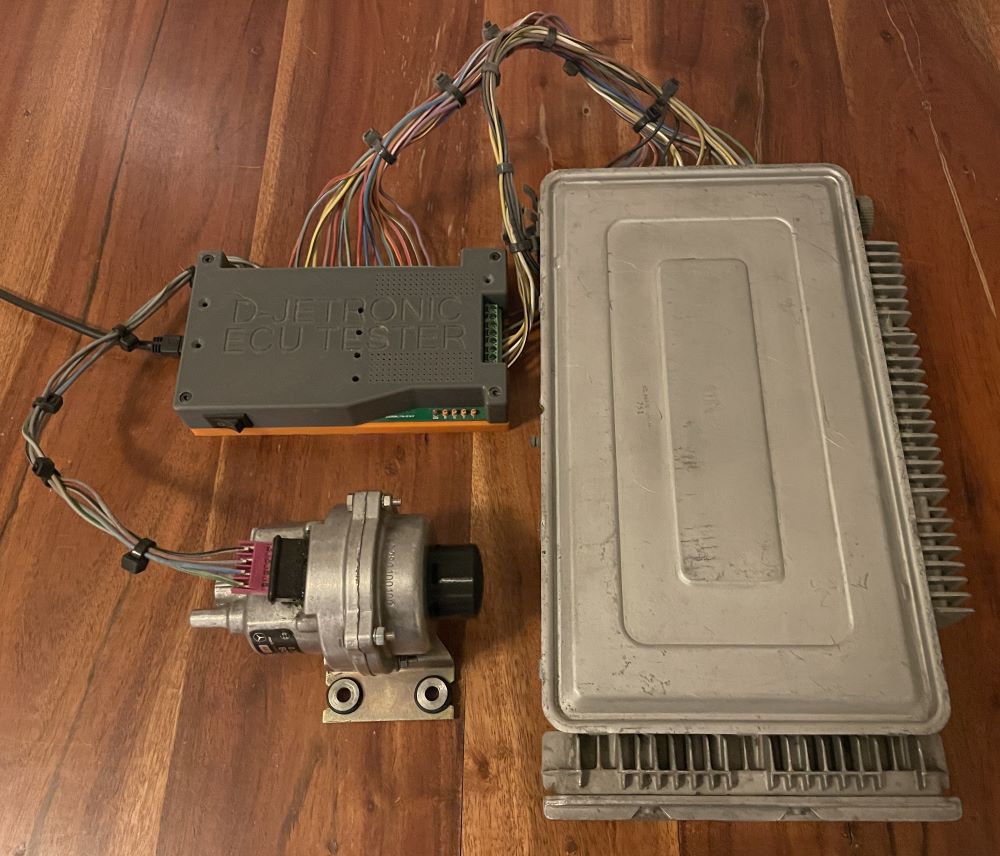Introduction
The ECU tester allows an ECU to be controlled and monitored outside of a vehicle. All of the inputs in a D-Jetronic system, such as coolant temperature, engine speed and TPS enrichment pulses, can be generated and fed into the ECU. The outputs such as injector pulses can be observed.
The aim of the tester is to make setup and use as simple as possible, with only the ECU, Manifold Pressure Sensor (MPS) and a 12V power supply required. Version 2 of the ECU does not require injectors or a fuel pump relay.
Some of the features include:
- Can be powered from a brick power supply or a bench power supply
- ECU power switch, allowing the tester to remain powered while the ECU is swapped out
- Integrated injector emulation – no need for injectors with wiring, lubrication and noise
- Dynamic testing – vary multiple parameters such as coolant temperature over time
- Real time charting – view a chart of data as it is received
- Pulse width measurement on all four groups
- Can generate start signal
- Monitoring of fuel pump output
- Has a case protecting the electronics
- CSV data export for analysis in Excel
- User-friendly PC software instead of a text-based interface
- Emulates temperature sensors, Throttle Position Switch (TPS), pulse generator (trigger points) and start signal
Setup Overview
The setup requires an ECU and an MPS as the two are tightly integrated. Note that no engine harness is needed – the MPS and ECU are connected together through the tester.
A USB connection provides communication to a PC.
A Mityvac or similar is needed to control the vacuum at the MPS.
Oscilloscope test points are available for the four injector groups.
Connections and Exterior Features
Injector Emulation
The injectors are emulated using a set of inductors and variable resistors. A series chain of four inductors provides the same response waveform as an injector group. The inductors are the 16 black components on this PCB render.
Variable resistors are used to allow fine tuning of the response waveforms to precisely match real injectors. Using emulated injectors gives the same result without needing a set of injectors ($$$), wiring and continual lubrication.
DJetronic Studio
The free PC software (downloadable from this site) provides user-friendly access to control and monitor the ECU.
The orange bar at the top shows the current configuration and status of the ECU outputs, including pulse width measurements for all four injector groups. This information is continually updated.
A panel allows dynamic testing to be configured.
Another panel allows real time charting of any input or output.
All of the files to build your own ECU tester are available for free on github here.
Video
An introduction to the ECU tester







